Respiratory protective equipment (RPE)
Respiratory protective equipment (RPE) is a type of personal protective equipment (PPE) designed to protect the wearer:
- from airborne contaminants:
- fumes (e.g. welding fumes)
- asbestos
- hazardous chemicals and dusts
- infectious substances.
- from low levels of oxygen such as working in a confined spaces
- during diving work.
Before deciding to use a respirator, put in other practical control measures such as local exhaust ventilation to eliminate or minimise contaminants in the air.
The two main types of respirators are:
- Air-purifying respirators – protect the wearer by using a filter to purify the air being breathed in. These types of respirators can be disposable or reusable and either
- non-powered – uses the wearer's breathing to draw air through the filter
- powered – uses a fan to draw air through the filter.
- Supplied-air respirators – protect the wearer by supplying clean breathing air from an independent source such as an air compressor or compressed air cylinder.
Never use an air-purifying respirator in an area where oxygen levels may be low, such as a confined space, or where the level of airborne contaminants is immediately dangerous to life or health.
Respirators come in different shapes and sizes. One size will not fit everyone. It is important that a fit-test is carried out for each person who will wear a respirator.
Surgical or patient care masks and nuisance dust masks do not protect the wearer from airborne contaminants such as small particles, aerosols, gases or vapours. These masks protects the wearer from splashes of large droplets of blood or body fluids only. Some nuisance dust masks look like respirators but usually have only one strap. In addition, these masks will not be marked with the Australian Standard AS/NZS 1716.
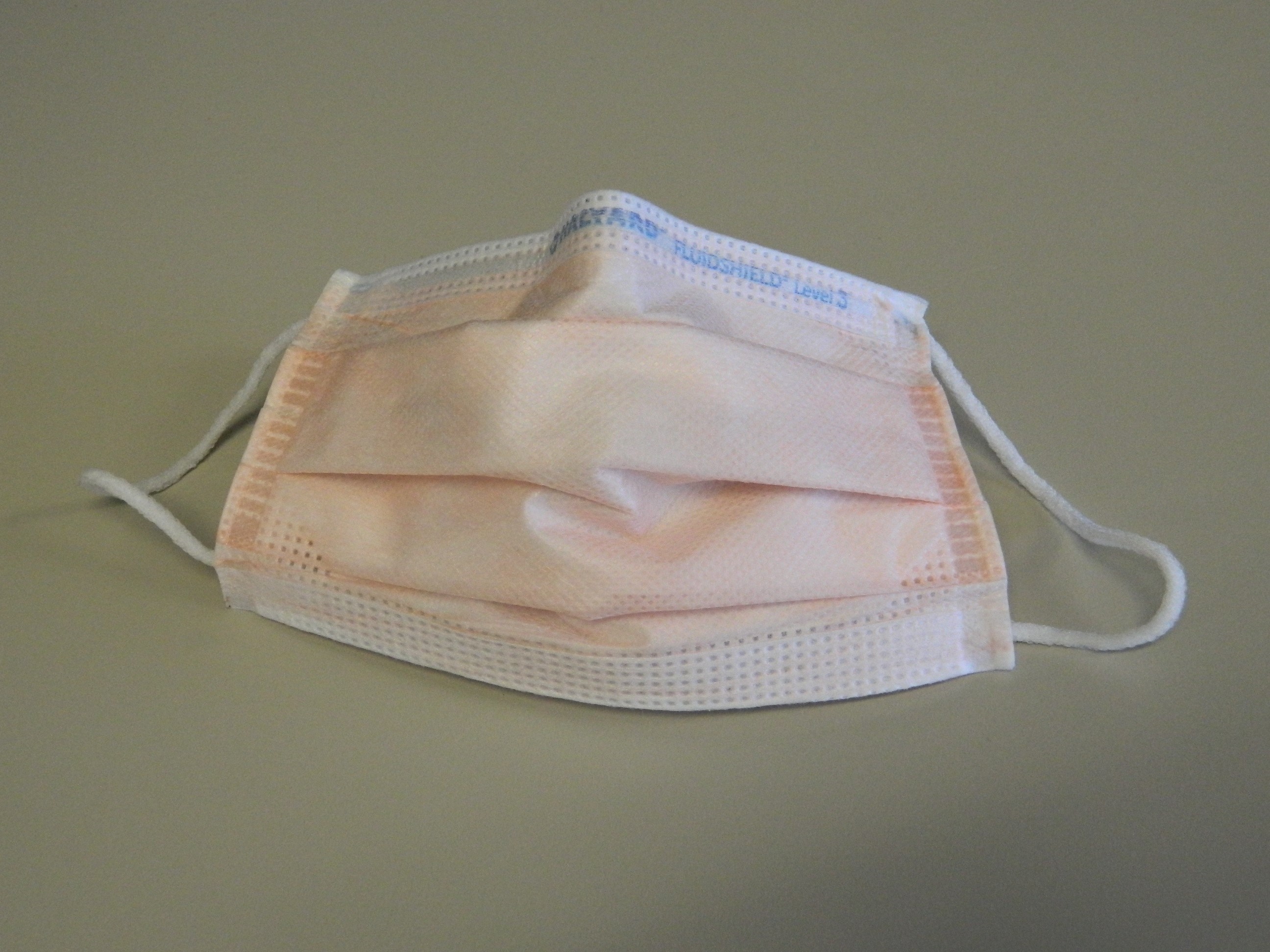
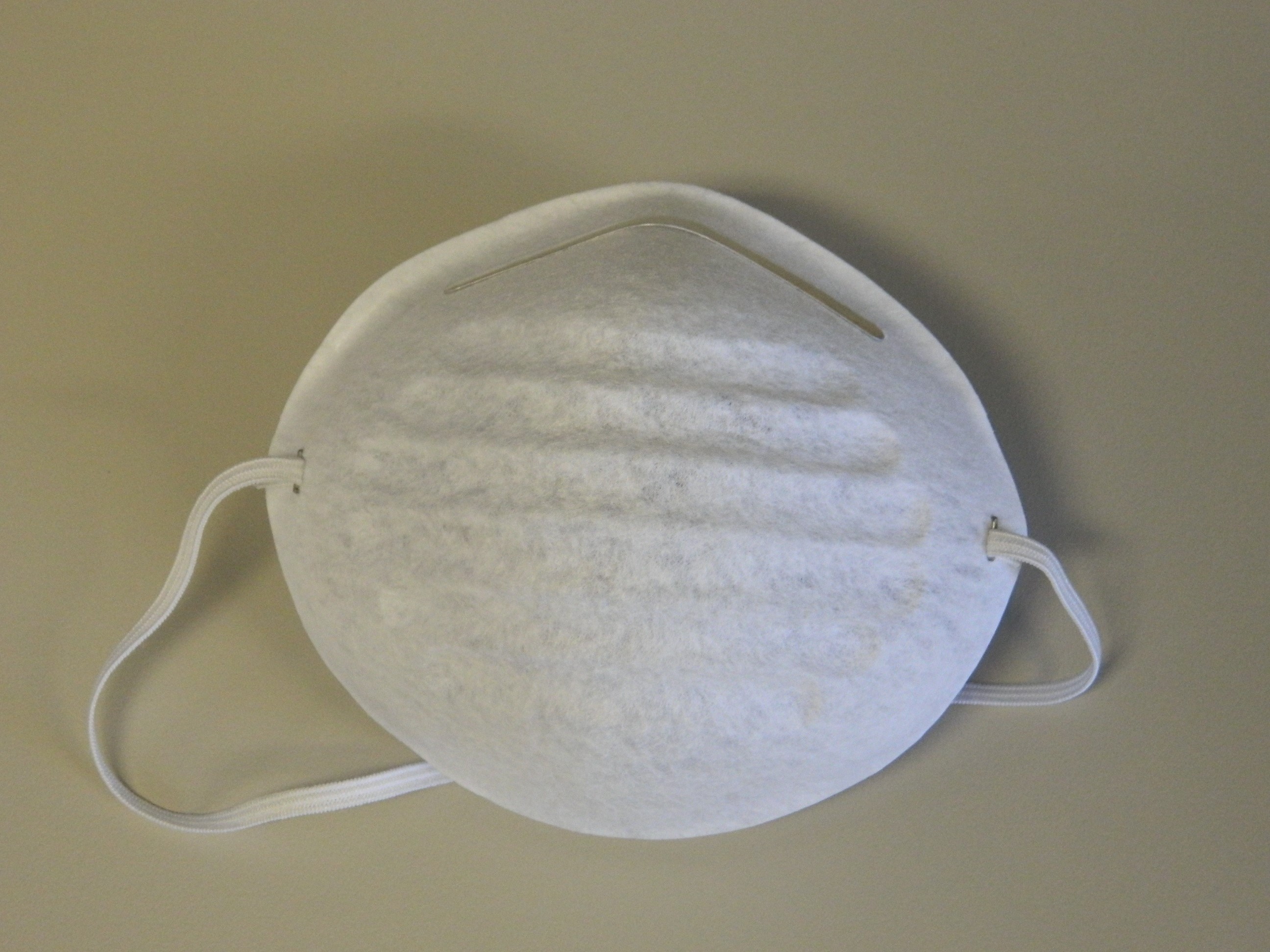
Select the right respirator for the job
There are two important factors to consider when selecting a respirator:
- The level of protection given by the respirator is suitable for the level of air contamination.
- The filter in the respirator is suitable for the type of airborne contaminants in the workplace.
Respirators to be worn in certain types of situations will need special consideration. These may include:
- working with biological hazards such as micro-organisms
- diving work
- where the level of oxygen may be low, such as in a confined space
- where the level of airborne contaminants is immediately dangerous to life or health
- where the level of airborne contaminants is unknown
- emergency escape
- where there is a risk of breathing in carbon monoxide
- flammable or explosive atmospheres.
Respirators used at work should comply with Australian standard AS/NZS 1716. This number is usually displayed on the respirator or its packaging.
Match the respirator to the level of air contamination
Knowing the level of air contamination in the workplace is an important factor in choosing the correct type of respirator. In some work situations it is possible for the level of harmful airborne contaminants to exceed the capability of the respirator to protect the wearer.
The more contaminated the workplace air, the more protective the respirator needs to be.
Choose the correct type of filter
Filters used in air-purifying respirators must be suitable for the type of air contaminant you are protecting against. The filter in an air-purifying respirator is designed to protect from dusts, aerosols, fumes or gases. Filters may be built into the respirator or come separately and can be changed.
It is essential the right type of filter for the work task is used otherwise the wearer may be unprotected.
Particulate filters
Particulate filters only protect against solid and liquid particles including micro-organisms. They do not protect against gases or vapours such as solvent vapour.
Particulate filters are classified and marked as P1, P2 or P3, with P3 providing the highest level of protection. However, P3 protection can only be achieved if the P3 filter is used in a full-face respirator.
Use a P2 or P3 filter where the air contaminants are produced by a hot process for example soldering.
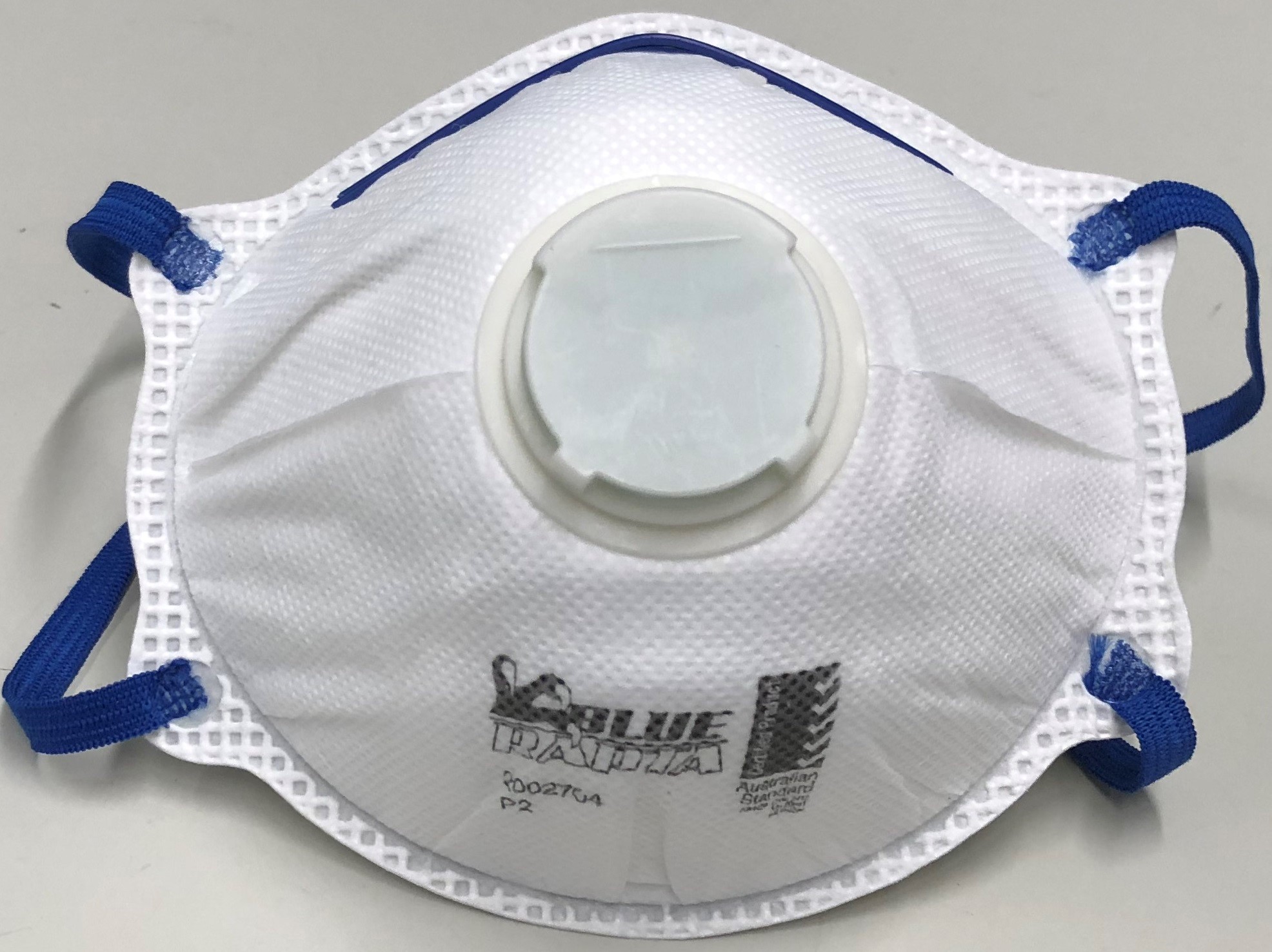
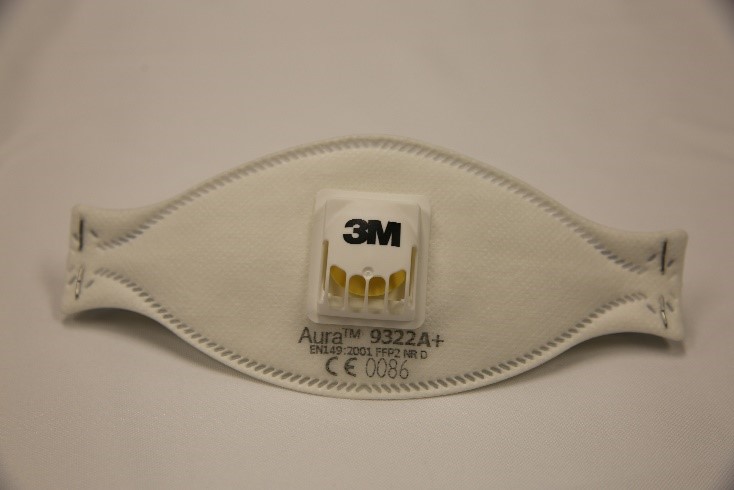
Gas and vapour filters
For protection from gases and vapours, ensure the filter will absorb the type of gas or vapour you need protection against and has the capacity to absorb the level of contamination in the air. The capacity to absorb is indicated by the Class of the filter. Absorption capacity, from lowest to highest, is indicated by the following – Class AUS, Class 1, Class 2 and Class 3.
Filters for gases and vapours are identified with letters and colours to indicate the type of chemical it will protect against. For example a respirator that will protect against ammonia is marked with K.
Gas and vapour filters do not protect against particles.
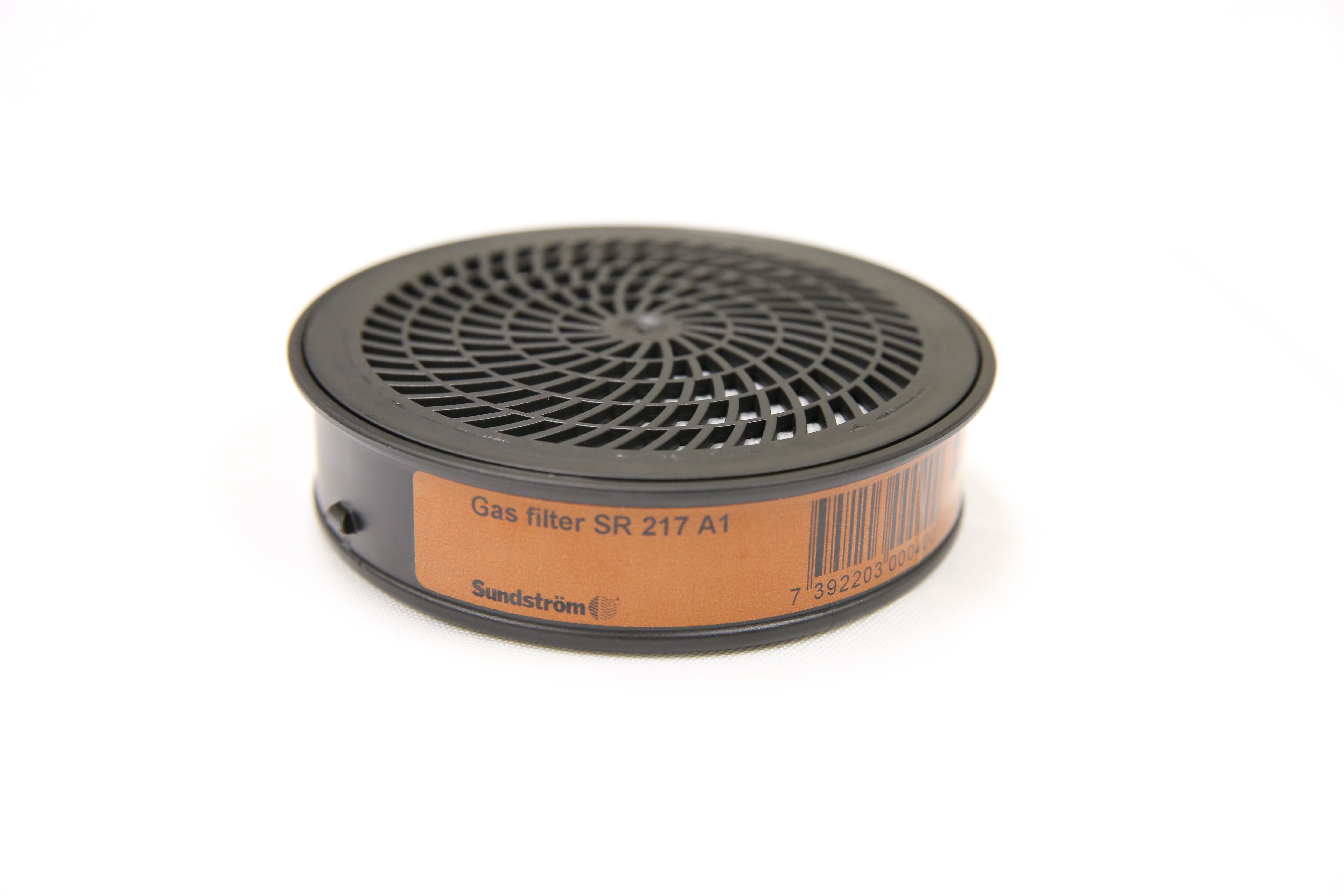
Combined particulate and gas/vapour filters
There is no one type of filter that provides protection from all contaminants. However, some filters may give combined protection against a number of contaminants such as particles and gases.
Filter types for gases and vapours
| Filter | Examples of contaminants / uses |
|---|---|
| Type A – organic vapours | Solvents (with boiling point above 65°C) |
| Type B AUS or B1 – acid gases | Chlorine / sterilization of water, chemical manufacture, hydrogen chloride / chlorinated organic chemical manufacture, steel pickling |
| Type B2 and B3 – acid gases and hydrogen cyanide (HCN) | Plastics manufacture, gold ore refining, HCN fumigation |
| Type E – sulphur dioxide (SO₂) | SO₂/casting of metals, bleach manufacture, manufacture of sulphuric acid, fertilizer manufacture, metal cleaning, petroleum refining |
| Type G – agriculture chemicals | Low vapour pressure (below 1.3 Pa at 25°C) organic vapours, pesticide spraying, mixing, manufacture |
| Type K – Ammonia (NH₃) | NH₃/refrigeration, manufacture of fertilizers, explosives, plastics, low boiling point amines/chemical manufacture |
| Type AX - Low boiling point organic compounds (below 65°C) | As specified by the manufacturer (e.g. dimethyl ether, vinyl chloride) |
| Type NO - Oxides of nitrogen | Oxides of nitrogen |
| Type Hg – Mercury | Metallic mercury/chemical industry, inorganic mercury compounds |
| Type MB - Methyl bromide | Fumigation |
| Other types | For use against specific chemicals not falling in the above type description as specified by the manufacturer (e.g. hydrogen fluoride) |
Respirator selection table
The following tables show examples of minimum RPE required depending on the level of air contamination based on AS/NZS 1715:2009 Selection, use and maintenance of respiratory protective equipment.
Negative pressure respirators
| Air contamination level | Half-face disposable | Half-face reusable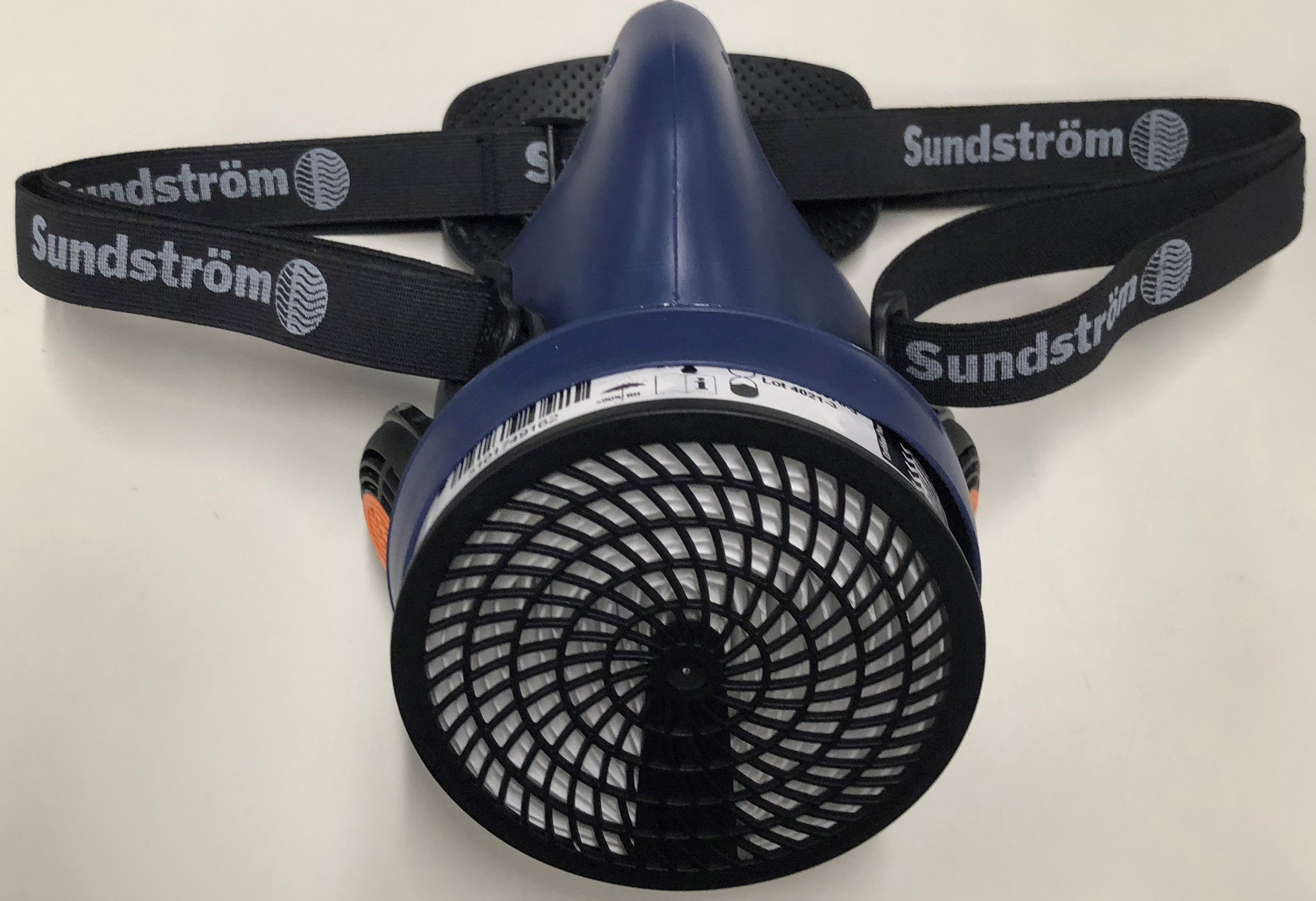 | Full-face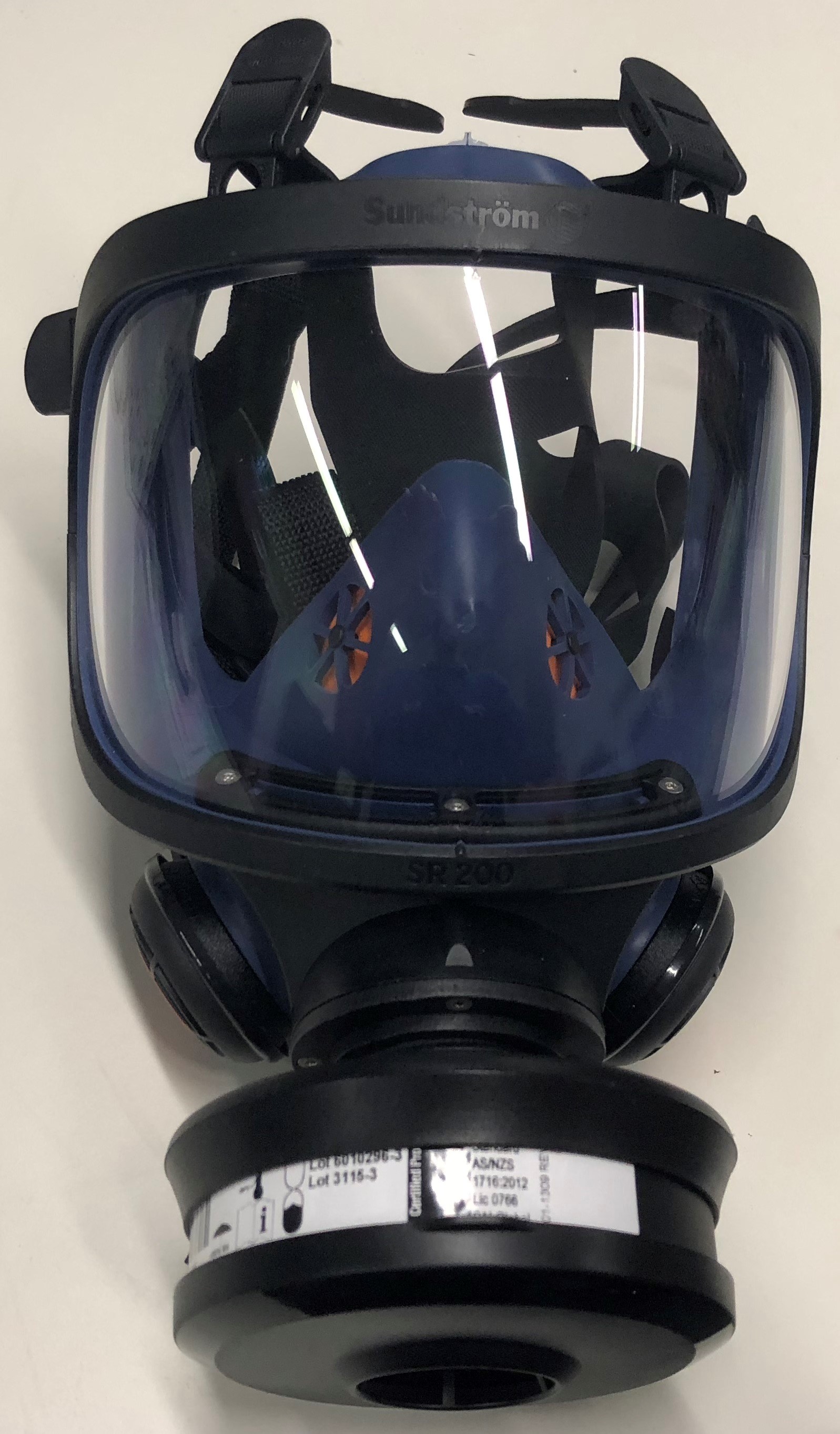 | |||
|---|---|---|---|---|---|---|
| Particles | Gas/Vapour | Particles | Gas/Vapour | Particles | Gas/Vapour | |
| Up to 10x WES |
P1* P2 |
Class AUS (1) Class 1 (1) Class 2 (1) Class 3 (1) |
P1* P2 P3 |
Class AUS (1) Class 1 (1) Class 2 (1) Class 3 (1) |
P1* P2 |
Class AUS (1) Class 1 (1) Class 2 (1) |
| Up to 50x WES | x | x | x | x | P2 |
Class AUS (1) Class 1 (2) |
| Up to 100x WES | x | x | x | x | P3 |
Class 2 (2) Class 3 |
| Over 100x WES | x | x | x | x | x | x |
| Unknown level | x | x | x | x | x | x |
| Oxygen level of less than 19% | x | x | x | x | x | x |
*P1 filters not suitable for particles produced by hot processes (e.g. soldering and welding).
Note 1–Class AUS and Class 1 are not suitable where maximum gas/vapour concentration is over 1,000 parts per million.
Note 2–Class 2 filters are not suitable where maximum gas/vapour concentration is over 5000 parts per million.
Positive pressure respirators
| Air contamination level | Powered air (PAPR) | Air-hose | Air-line | SCBA | ||||
|---|---|---|---|---|---|---|---|---|
| Particles | Gas/Vapour | Particles | Gas/Vapour | Particles | Gas/Vapour | Particles | Gas/Vapour | |
| Up to 10x WES | P1* |
Class A US (1) Class 1 (1) Class 2 (1) | ||||||
| Up to 50x WES | P2 | Class 2 (2) | ||||||
| Up to 100x WES | P3 | Class 2 (2) | ||||||
| Over 100x WES | P3 | x | Yes | Yes | Yes | Yes | Yes | Yes |
| Unknown level | Yes | Yes | Yes | Yes | Yes | Yes | ||
| Oxygen level of less than 19% | Yes | Yes | Yes | Yes | Yes | Yes | ||
*P1 filters not suitable for particles produced by hot processes e.g. soldering and welding.
Note 1–Class AUS and Class 1 are not suitable where maximum gas/vapour concentration is over 1,000 parts per million.
Note 2–Class 2 filters are not suitable where maximum gas/vapour concentration is over 5,000 parts per million.
These tables are based upon the content of tables 4.2, 4.3, 4.5 and 4.6 from Australian standard AS/NZS 1715. Refer to this standard for further information on the selection of suitable RPE based on the required minimum protection factor.
Other factors that affect respirator selection
When choosing RPE consider the following factors.
Worker
- Face shape and size will influence the size and model of respirator appropriate for each wearer. One type and size will not suit everyone so carry out a fit-test for every worker.
- Facial hair can prevent some types of respirators from sealing properly.
- Pre-existing medical conditions of the wearer may restrict or prevent the wearing of a respirator for example, chronic lung diseases such as asthma.
- Psychological considerations such as possible claustrophobia and anxiety.
Work task
- How long the respirator will be worn and the physical demands of the task for example, wearing unpowered RPE for more than an hour or during hard physical work may become uncomfortable and result in a person removing the respirator while still in a contaminated area.
- Other risks from the work task for example, a half-face disposable respirator with an exhalation valve may not be appropriate where there is a risk of splashes.
- What other PPE will be worn for example, some safety glasses may interfere with the fit of the respirator.
- Vision and communication requirements.
Work environment
- How hot and humid the work environment is for example, powered respirators may be more appropriate where heat stress is a risk.
- Some respirators, such as powered air purifying respirators, may act as an ignition source for flammable or explosive vapours, gases and dusts.
A safety equipment supplier, occupational hygienist or occupational health and safety professional may be able to help select the most suitable respirator for your workplace.
Some RPE manufacturers or suppliers have selection charts that can help in selecting the correct type of respirator and filter.
Respirator selection example
Example – gas/vapour
- A worker adds toluene, a volatile solvent, to a solvent based paint blending tank for half an hour each day.
- Vapour from the toluene released during the process is harmful to the nervous system and could cause irritation of the nose and throat.
- The WES for toluene are
- 50 parts per million (8 hour TWA*)
- 150 parts per million (STEL#)
- Air monitoring was carried out to measure the level of toluene in the workplace air during the process. The airborne concentration of toluene was measured at 190 parts per million.
*8 hour time-weighted average (TWA) is the maximum average airborne concentration of a substance when calculated over an eight hour working day, for a five day working week. The Hazardous Chemicals Information System (HCIS) provides more information on workplace exposure standards.
#Short term exposure limit (STEL) is the time-weighted average maximum airborne concentration of a substance when calculated over a 15 minute period. The Hazardous Chemicals Information System (HCIS) provides more information on workplace exposure standards.
RPE suitable for the work activity
The following table shows some RPE that may be suitable to protect the worker who is exposed up to two times the STEL and four times the 8 hour TWA for toluene.
| Respirator type | Filter type and class | Comment |
|---|---|---|
| Half facepiece |
Type A Class 1 | Suitable for wearing for one hour and allows worker mobility |
| PAPR with half facepiece |
Type A Class 1 | Suitable but not necessary due to short exposure time |
| Air-line using compressed air with half face-piece | Not applicable | Suitable but not necessary due to short exposure time |
Half face-piece reusable respirator fitted with an A1 gas/vapour filter which has low to medium absorption capacity and is suitable for certain inorganic gases and vapours.
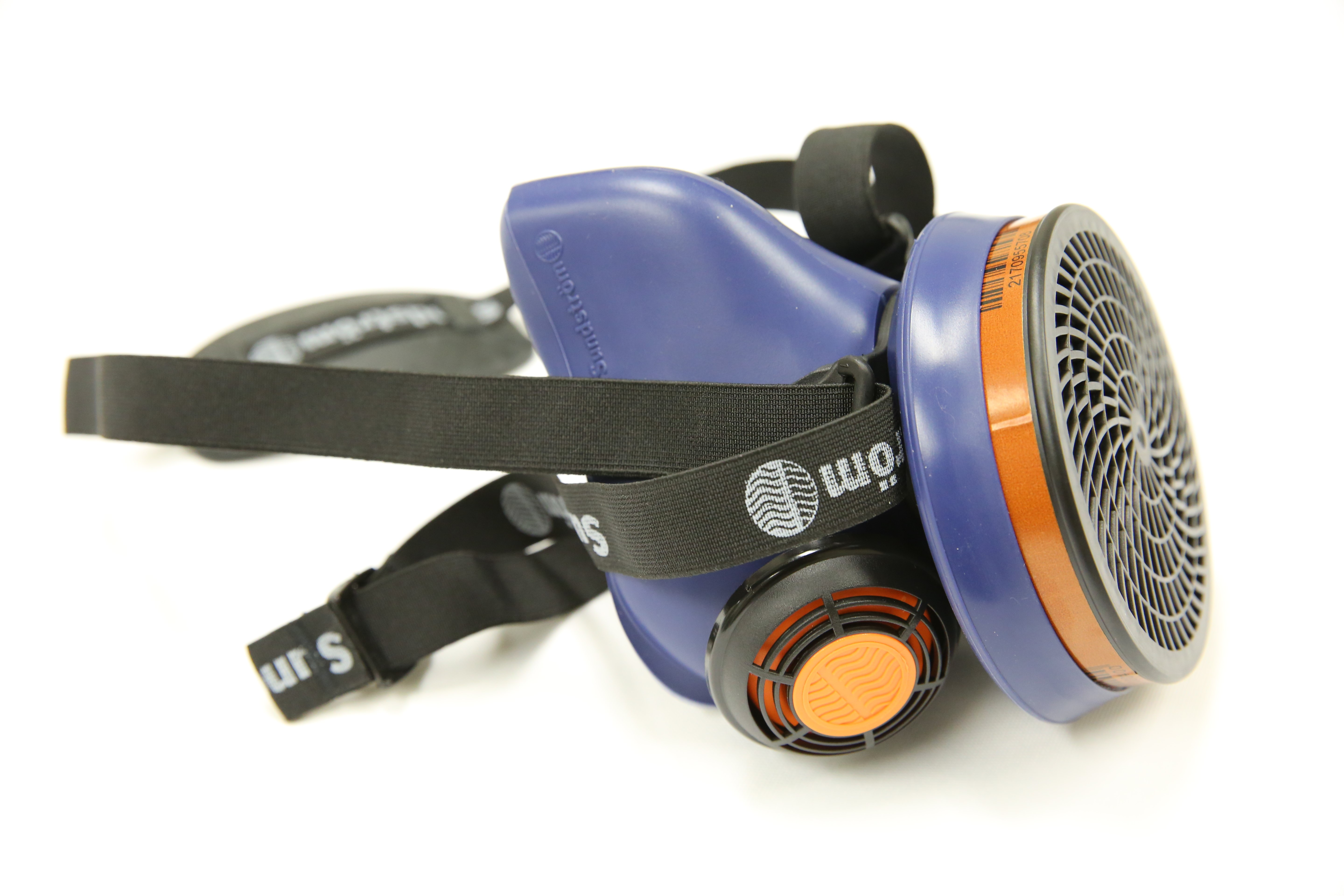
This example is for illustrative purposes only. Other control measures such as local extraction ventilation, isolation and substitution must be implemented before RPE where reasonably practicable.
The effectiveness of a tight-fitting respirator facepiece, such as a half-face or full-face respirator that uses straps, relies on getting a good seal with the wearer's face. If a respirator does not fit properly, the wearer will not get the expected level of protection.
Use both of the following methods to make sure a respirator is a suitable fit for each worker:
- fit-test and
- fit-check.
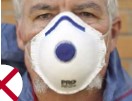
Facial hair, including beards, moustaches, sideburns and stubble, between the sealing surface of a tight-facing facepiece and the face will stop the respirator from sealing properly.
Workers should be clean shaven where the respirator facepiece comes in contact with the skin before wearing their respirator.
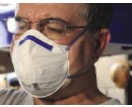
Only wear a half-face or full-face respirator that has been fit-tested to you.
Fit-tests are important for disposable and reusable respirators.
Fit-testing
People's faces vary significantly in size and shape so it is important that a tight-fitting respirator is a suitable fit for each worker.
Fit testing detects if air leaks into the respirator through gaps in the seal between the respirator facepiece and face. There are two methods of fit testing:
- Qualitative fit testing - is a pass/fail test that relies on the wearer's ability to taste or smell a test agent. This type of test can be used on half-face respirators.
- Quantitative fit testing – uses specialised equipment to measure how much air leaks into the respirator. This type of test can be used on half-face and full-face respirators.
Fit-testing can be carried out in-house by a competent person, manufacturer, supplier or service provider.
Fit-testing should be carried out:
- before the respirator is selected or used for the first time
- at least once per year to ensure it continues to fit adequately
- whenever there is a change in the wearer's facial characteristics or features which may affect the facial seal e.g. large weight loss or gain.
A written record of fit tests carried out should be kept for each worker including:
- type of test performed
- make, model, style and size of respirators tested
- date of the test
- result of the test.
Fit-checking
Each time a tight-fitting respirator is put on, the wearer should carry out a fit check.
A fit-check is a quick check to ensure the respirator, which has been fit-tested, has been properly positioned on the face and there is a good seal between the respirator and face.
Fit-checks do not replace the need for a fit-test.
Follow the manufacturer's instructions on how to carry out a fit-check.
Read about how to put on and take off a respirator.
The maintenance of some respirators will need special consideration such as those used:
- when working with biological hazards such as microorganisms
- in diving work
- as part of a supplied air systems including air lines, air hoses and self-contained breathing apparatus (SCBA).
Disposable respirators
Disposable respirators are for single use and should be disposed after use. Ongoing maintenance is not required.
Re-usable respirators
- inspect the respirator before and after each use and during cleaning
- replace all parts that are cracked, torn, broken, missing or worn
- follow the manufacturer's instructions.
Facepieces
- ensure there are no holes or tears
- check the face seal are not distorted
- clean and/or disinfect according to the manufacturer's instructions.
Head straps or harness
- check webbing for breaks, elasticity and frayed edges.
Inhalation and exhalation valves
- ensure there are no tears, cracks or distortions
- make sure the valve and valve seat are free from dust, dirt and hair.
Filters
- replace filters before the end of their service life
- ensure filters are properly secured and filter housing is not cross threaded.
Batteries and alarms
- check the battery charge and flow rate of powered RPE
- calibrate monitors or alarms.
When to replace filters
Replace a particulate filter when it becomes difficult to breathe through, or the filter is visibly dirty or damaged.
Gas and vapour filters have a certain capacity for removing gases or vapours from the air. Once this capacity is reached, gas or vapour will pass straight through and provide no protection to the wearer.
When to replace gas and vapour filters depends on a number of factors including the following:
- Class of the filter - For example class 1 filters can absorb less total contaminants than a class 3.
- Level of contaminants in the workplace air - For example, the higher the level of airborne contaminants the shorter the service life of the filter.
- Work intensity of the wearer - For example, higher breathing rates will reduce the filter service life.
- Temperature and humidity - For example, high humidity can significantly decrease filter life.
- Manufacturer's instructions - For example, expiration date.
Establish a filter replacement schedule and keep a record of the date a filter is changed and when the next change is due.
Many respirator filter manufacturers produce guidance information and on-line tools for calculating expected filter life.
Store gas and vapour filters in airtight bags or containers between uses as they continue to absorb airborne contaminants even when not being worn.
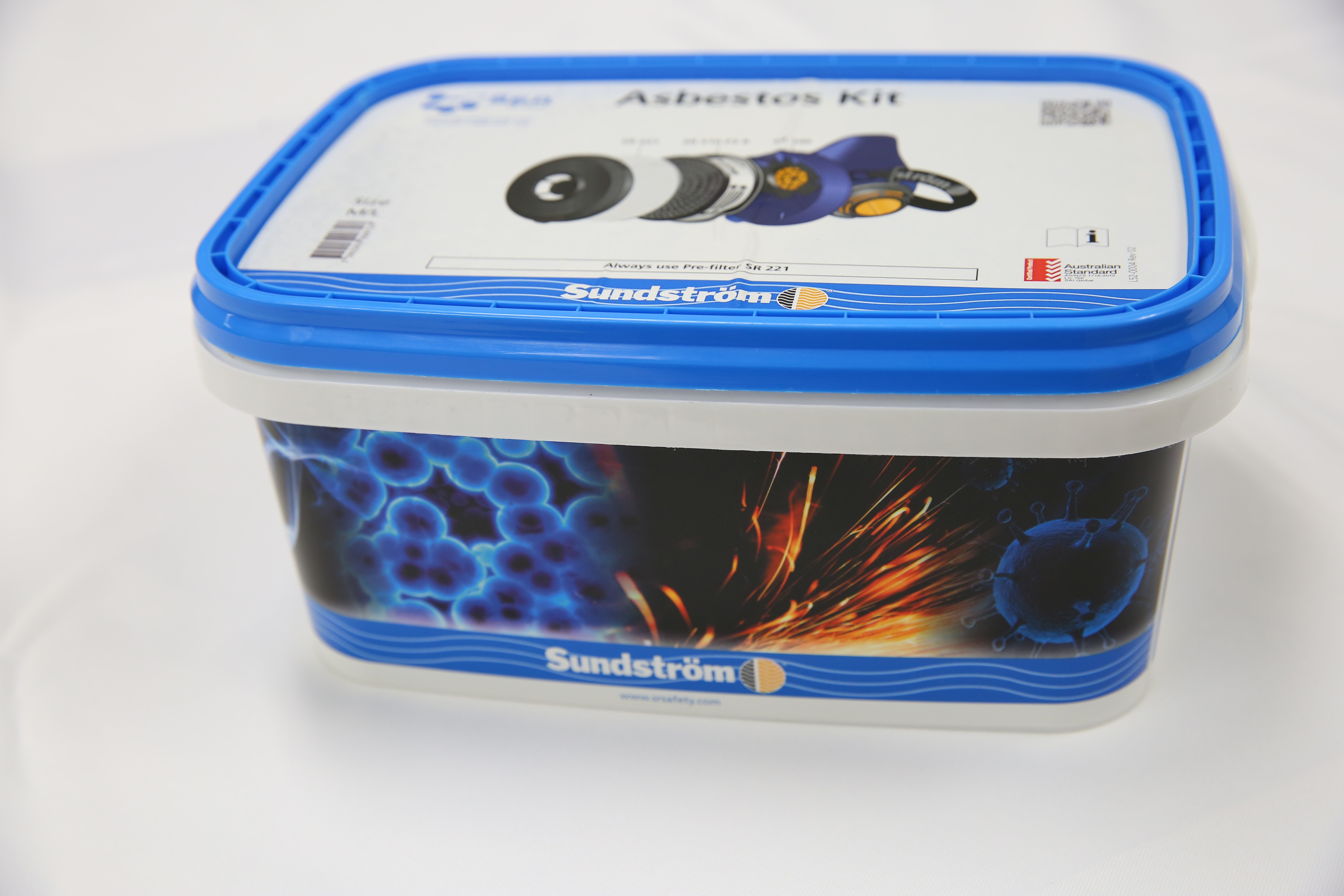
Air compressors can be used to supply clean breathing air to RPE used in a range of industrial and manufacturing processes such as abrasive blasting and spray painting. The quality of supplied air must meet the minimum standard outlined in AS/NZS 1715. This standard defines acceptable levels of oxygen, carbon monoxide, carbon dioxide, oil, moisture and pressure for supplied-air respirators.
Provide breathing air that meets AS/NZS 1715 by:
- using a breathing air system that is designed for safe use with supplied-air respirators
- regularly testing the quality of the air from the system in accordance with the manufacturer's instructions
- installing a continuously operating carbon monoxide monitor equipped with an alarm on oil-lubricated compressors in a position as close to the user as practicable
- installing a high temperature protection cut-off switch, where available from manufacturers, on oil-lubricated compressors. The high temperature protection cut off circuit should be connected to a fail-safe mechanism
- placing the compressor air intake well away from sources of contaminants, particularly exhaust gases from operating plant, equipment or vehicles, or areas where exhaust fumes may accumulate.
General purpose air compressors designed to supply industrial air to equipment should not be used to supply breathing air, as the air can become contaminated with harmful gases and substances including carbon monoxide.
Read more about risks of carbon monoxide in breathing air for industrial and manufacturing work and in diving work.
All workplaces that use RPE should implement a respiratory protection program.
A good respiratory protection program will include:
- correctly selecting appropriate RPE
- medical screening of RPE users
- training in the correct use and maintenance of RPE
- ensuring RPE is correctly used
- fit testing and fit checking
- inspection, maintenance and repair of RPE
- correct storage
- keeping records.
Related links
- A guide to respiratory protective equipment (HSA Ireland)
- Australian/New Zealand Standard Selection, use and maintenance of respiratory protective equipment AS/NZS 1715
- Inspectors’ Respiratory Protection Training Video (HSE UK)
- Introducing & Managing RPE in the workplace (HSE UK)
- Respiratory protection etool (OSHA USA)
- Respiratory protective equipment at work: A practical guide (HSE UK)
- RESP-FIT Respirator fit-testing training and accreditation